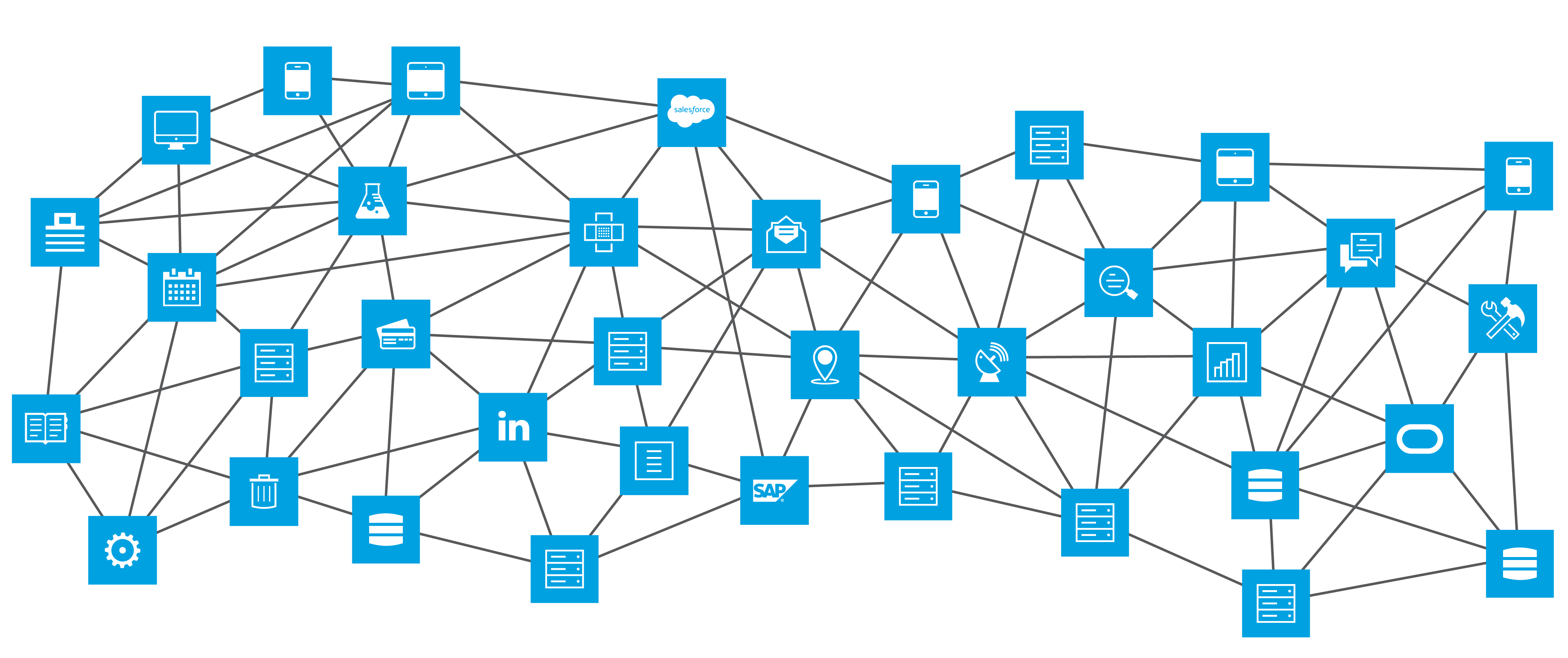- Home
- Resources
- Articles
- Hybrid integration
- Enterprise modeling for IT infrastructure
Enterprise Modeling for IT Infrastructure
Enterprise IT infrastructure is becoming increasingly complex. Today the modern IT infrastructure consists not only of on-premises systems, but an ever-increasing universe of SaaS applications -- many of which are housed in the cloud -- mobile applications, and connected devices of all kinds. In order to govern and provide data security for this complicated landscape, enterprise modeling for IT infrastructure must evolve to a more decentralized state.
Today, all parts of the business want access to best-of-breed SaaS applications, and wants to develop mobile applications to satisfy customer demand, but a traditional enterprise model for IT infrastructure can’t handle this workload. The sheer number of things the business wants to use and connect to its central data systems means IT can no longer own all the applications. However, IT still needs to own and govern the data that powers all those applications, because IT is responsible for data security and governance.
The IT Infrastructure Model Must Change

This is why there must be major changes to the traditional model of IT infrastructure. Rather than owning every piece of the application stack, IT must unlock the value of data within applications so that developers in every part of the organization can build those applications without compromising security In every part of the enterprise today, you have designers, business developers, mobile app developers, development partners; and they're all going to build new applications and new experiences for customers. Depending on the speed and workload of the IT team, those applications will be built with or without IT involvement. To keep up, IT needs to do is think about how to govern and provide self-serve access to that data.
This means the new enterprise model for IT infrastructure has to be composable. That means you need to be able to allow relevant constituents in the business to take pieces of information or the bits of functionality that they need from your central IT infrastructure and build these new experiences. You need to have the component pieces of your IT infrastructure as composable APIs or composable services, that you can pull together in different ways to experiment, evolve, and drive different type of outcomes for you and your customers.
The New Model for Enterprise IT Infrastructure
The best approach for this type of IT infrastructure is called API-led connectivity. It’s a simple operating model that provides a view of your organization based on your reusable capabilities and who should own and who can access those capabilities. The ownership and accessibility shifts by unlocking the value of your organization by decentralizing access and value creation inside the business.
MuleSoft’s Anypoint Platform uses API-led connectivity to create not only a new technological solution, but a new IT model as well. Business trends like mobility, big data, cloud, and IoT are driving extraordinary changes for the modern business; companies will be defined by how well they connect the explosion of apps, data, and devices as well as how quickly they can respond to new technologies.
Traditional IT infrastructure, with its reliance on custom code and point-to-point integrations, can’t hope to deliver on agility, speed, and flexibility as well as an integrated approach.
Find out more about how Anypoint Platform and API-led connectivity could help transform your business.



